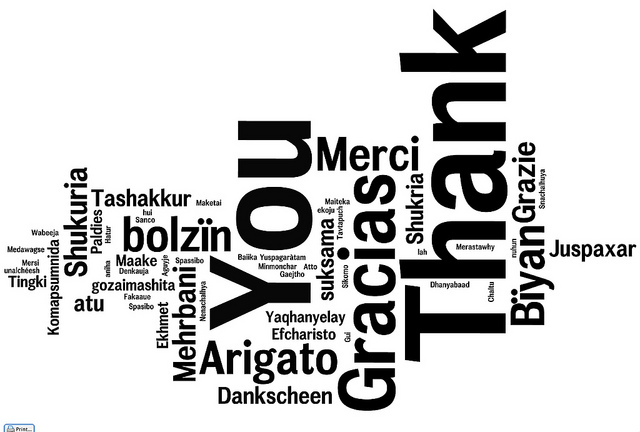Is the new one better than the old one?
 Successful commercialization of products and services is fueled by one fundamental – making the new one better than the old one. If the new one is better the customer experience is better, the marketing is better, the sales are better and the profits are better.
Successful commercialization of products and services is fueled by one fundamental – making the new one better than the old one. If the new one is better the customer experience is better, the marketing is better, the sales are better and the profits are better.
It’s not enough to know in your heart that the new one is better, there’s got to be objective evidence that demonstrates the improvement. The only way to do that is with testing. There are a number of types testing mechanisms, but whether it’s surveys, interviews or in-the-lab experiments, test results must be quantifiable and repeatable.
The best way I know to determine if the new one is better than the old one is to test both populations with the same test protocol done on the same test setup and measure the results (in a quantified way) using the same measurement system. Sounds easy, but it’s not. The biggest mistake is the confusion between the “same” test conditions and “almost the same” test conditions. If the test protocol is slightly different there’s no way to tell if the difference between new and old is due to goodness of the new design or the badness of the test setup. This type of uncertainty won’t cut it.
You can never be 100% sure that new one is better than the old one, but that’s were statistics come in handy. Without getting deep into the statistics, here’s how it goes. For both population’s test results the mean and standard deviation (spread) are calculated, and taking into consideration the sample size of the test results, the statistical test will tell you if they’re different and confidence of it’s discernment.
The statistical calculations (Student’s t-test) aren’t all that important, what’s important is to understand the implications of the calculations. When there’s a small difference between new and old, the sample size must be large for the statistics to recognize a difference. When the difference between populations is huge, a sample size of one will do nicely. When the spread of the data within a population is large, the statistics need a large sample size or it can’t tell new from old. But when the data is tight, they can see more clearly and need fewer samples to see a difference.
If marketing claims are based on large sample sizes, the difference between new and old is small. (No one uses large sample sizes unless they have to because they’re expensive.) But if in a design review for the new product the sample size is three and the statistical confidence is 95%, new is far better than old. If the average of new is much larger than the average of old and the sample size is large yet the confidence is low, the statistics know the there’s a lot of variability within the populations. (A visual check should show the distributions to more wide than tall.)
The measurement systems used in the experiments can give a good indication of the difference between new and old. If the measurement system is expensive and complicated, likely the difference between new and old is small. Like with large sample sizes, the only time to use an expensive measurement system is when it is needed. And when the difference between new and old is small, the expensive measurement system’s ability accurately and repeatably measure small differences (micrometers vs. meters).
If you need large sample sizes, expensive measurement systems and complicated statistical analyses, the new one isn’t all that different from the old one. And when that’s the case, your new profits will be much like your old ones. But if your naked eye can see the difference with a back-to-back comparison using a sample size of one, you’re on to something.
Image credit – amanda tipton
If you don’t know the critical path, you don’t know very much.
 Once you have a project to work on, it’s always a challenge to choose the first task. And once finished with the first task, the next hardest thing is to figure out the next next task.
Once you have a project to work on, it’s always a challenge to choose the first task. And once finished with the first task, the next hardest thing is to figure out the next next task.
Two words to live by: Critical Path.
By definition, the next task to work on is the next task on the critical path. How do you tell if the task is on the critical path? When you are late by one day on a critical path task, the project, as a whole, will finish a day late. If you are late by one day and the project won’t be delayed, the task is not on the critical path and you shouldn’t work on it.
Rule 1: If you can’t work the critical path, don’t work on anything.
Working on a non-critical path task is worse than working on nothing. Working on a non-critical path task is like waiting with perspiration. It’s worse than activity without progress. Resources are consumed on unnecessary tasks and the resulting work creates extra constraints on future work, all in the name of leveraging the work you shouldn’t have done in the first place.
How to spot the critical path? If a similar project has been done before, ask the project manager what the critical path was for that project. Then listen, because that’s the critical path. If your project is similar to a previous project except with some incremental newness, the newness is on the critical path.
Rule 2: Newness, by definition, is on the critical path.
But as the level of newness increases, it’s more difficult for project managers to tell the critical path from work that should wait. If you’re the right project manager, even for projects with significant newness, you are able to feel the critical path in your chest. When you’re the right project manager, you can walk through the cubicles and your body is drawn to the critical path like a divining rod. When you’re the right project manager and someone in another building is late on their critical path task, you somehow unknowingly end up getting a haircut at the same time and offering them the resources they need to get back on track. When you’re the right project manager, the universe notifies you when the critical path has gone critical.
Rule 3: The only way to be the right project manager is to run a lot of projects and read a lot. (I prefer historical fiction and biographies.)
Not all newness is created equal. If the project won’t launch unless the newness is wrestled to the ground, that’s level 5 newness. Stop everything, clear the decks, and get after it until it succumbs to your diligence. If the product won’t sell without the newness, that’s level 5 and you should behave accordingly. If the newness causes the product to cost a bit more than expected, but the project will still sell like nobody’s business, that’s level 2. Launch it and cost reduce it later. If no one will notice if the newness doesn’t make it into the product, that’s level 0 newness. (Actually, it’s not newness at all, it’s unneeded complexity.) Don’t put in the product and don’t bother telling anyone.
Rule 4: The newness you’re afraid of isn’t the newness you should be afraid of.
A good project plan starts with a good understanding of the newness. Then, the right project work is defined to make sure the newness gets the attention it deserves. The problem isn’t the newness you know, the problem is the unknown consequence of newness as it ripples through the commercialization engine. New product functionality gets engineering attention until it’s run to ground. But what if the newness ripples into new materials that can’t be made or new assembly methods that don’t exist? What if the new materials are banned substances? What if your multi-million dollar test stations don’t have the capability to accommodate the new functionality? What if the value proposition is new and your sales team doesn’t know how to sell it? What if the newness requires a new distribution channel you don’t have? What if your service organization doesn’t have the ability to diagnose a failure of the new newness?
Rule 5: The only way to develop the capability to handle newness is to pair a soon-to-be great project manager with an already great project manager.
It may sound like an inefficient way to solve the problem, but pairing the two project managers is a lot more efficient than letting a soon-to-be great project manager crash and burn. After an inexperienced project manager runs a project into the ground, what’s the first thing you do? You bring in a great project manager to get the project back on track and keep them in the saddle until the product launches. Why not assume the wheels will fall off unless you put a pro alongside the high potential talent?
Rule 6: When your best project managers tell you they need resources, give them what they ask for.
If you want to deliver new value to new customs there’s no better way than to develop good project managers. A good project manager instinctively knows the critical path; they know how the work is done; they know to unwind situations that needs to be unwound; they have the personal relationships to get things done when no one else can; because they are trusted, they can get people to bend (and sometimes break) the rules and feel good doing it; and they know what they need to successfully launch the product.
If you don’t know your critical path, you don’t know very much. And if your project managers don’t know the critical path, you should stop what you’re doing, pull hard on the emergency break with both hands and don’t release it until you know they know.
Image credit – Patrick Emerson
Organized For Uncertainty
 There are many different organizational structures, each with its unique set of strengths and weaknesses. The top-down organization has its strong alignment and limited flexibility while the bottom-up has its empowering consensus and sloth-like pace. Which one’s better? Well, it depends.
There are many different organizational structures, each with its unique set of strengths and weaknesses. The top-down organization has its strong alignment and limited flexibility while the bottom-up has its empowering consensus and sloth-like pace. Which one’s better? Well, it depends.
The function-based organization has strong subject matter expertise and weak cross-function coordination, while the business unit-based organization knows its product, market and customers but has difficulty working east-west across product families and customer segments. Is one better than the other? Same answer- it depends.
The matrix organization has the best of both worlds – business unit and functional – and isn’t particularly good at either. And there’s the ambidextrous organization that I don’t pretend to understand. If I had to choose one, which would I choose? It depends.
The best organizational structure depends on what you’re trying to do, depends on the environmental context, depends on the organization’s history and biases and the general state of organizational capability, capacity and profitability. But that’s not the whole picture because none of this is static. All of this changes over time and it changes in an unpredictable way. Because the best organizational structure depends on all these complicating factors and the factors change over time, there is never a “best” organizational structure.
Constant change has always been the dominant fundamental perturbing and disturbing our organizational structures. But, as competition turns up the wick and the pace of learning builds geometrically, change’s ability to influence our organizational structures has grown from disturbing to dismantling.
Change is the dominant fundamental, but its real power comes from the uncertainty it brings to the party. Our tired, old organizational structures were designed to survive in a long-dead era of glacial change and rationed uncertainty. And though our organizational structures were built in granite, the elevated sea levels of uncertainty are creating fissures in our inflexible organizational structures and profitability is leaking from all levels
If uncertainty is the disease, adaptability is the antidote. The organization must continually monitor its environment for changes. And when it senses an emerging shift, the organization it must move resources in a way that satisfies the new reality. The organization structure shifts to fit the work. The structure changes as the character of the projects change. The organizational structure never reaches equilibrium; it survives through continual evolutionary loop of sense-change-sense.
I don’t have a name for an organization like this, and I think it’s best not to name it. Instead, I think it’s best to describe how it behaves. It’s a living organization that behaves like a living organism. It wants to survive, so it changes itself based on changes in its environment. It’s an organization that self organizes.
Directionally, organizational structures should be less static and more dynamic, and they should evolve to fit the work. The difficult part is how to define the explicit rules on how it should change, when it should change and how it decides. But it’s more than difficult to describe explicit rules, it’s impossible. In domains of high levels of uncertainty there can be no predictability and without predictability a finite set of explicit rules will not work. The DNA of this living organization is implicit knowledge, evolutionary experimentation and personal judgement.
I’m not sure what to call this type of organizational structure, and I’m not exactly sure how to create one. But it sure sounds like a lot of fun.
Image credit — actor212
What Innovation Feels Like
 There are countless books and articles on innovation. You can read how others have done it, what worked and what didn’t, how best to organize the company and how to define it. But I have not read much about how it feels to do innovation.
There are countless books and articles on innovation. You can read how others have done it, what worked and what didn’t, how best to organize the company and how to define it. But I have not read much about how it feels to do innovation.
Before anything meaningful can happen, there must be discontent or anger. And for that there needs to be a realization that doing things like last time is a bad idea. This realization is the natural outcome of looking deeply at how things really are and testing the assumptions of the status quo. And the best way to set all this in motion is to do things that generate immense boredom.
Boredom can be created in two ways. 1. Doing the same boring work in the same boring way. 2. Stopping all activity for 30 minutes a day and swimming in the sea of your boring thoughts. Both work well, but the second one works faster.
Next, with your discontent in hand, it’s time birth the right question. Some think this the time for answers, but with innovation the real work is to figure out the question. The discomfort of trying to discover the right question is seven times more uncomfortable the discomfort of figuring out the right answer. And once you have the right question, the organization rejects you as a heretic. If the organization doesn’t dismiss you in a visceral way, you know you don’t have the right question. You will feel afraid, but repeat the cycle until your question threatens the very thing that has made the company successful. When people treat you like you threaten them, you know you’re on to something.
To answer your question, you need help from the organization, but the organization withholds them from you. If you are ignored, blocked or discredited, you’re on the right path. Break the rules, disregard best practices, and partner with an old friend who trusts you. Together, rally against the organization and do the work to answer your question. If you feel isolated, keep going. You will feel afraid and you will second guess yourself. Proceed to the next step.
Make a prototype that shows the organization that your question has an answer. Don’t ask, just build. Show the prototype to three people and prepare for rejection. You and your prototype will be misunderstood and devalued. Not to worry, as this is a good sign. Revise the prototype and repeat.
Do anything you can to show the prototype to a customer. Video the customer as they interact with the prototype. You will feel afraid because you are breaking the rules. This is how you should feel. Keep going.
Set up a meeting with a leader who can allocate resources. If you have to, set up the meeting under false pretenses (the organization is still in rejection mode) and show the video. Because of the uncertainty of their response, you will feel afraid. Show the video anyway.
The organization is comfortable working in the domains of certainty and control, but innovation is done in the domain of uncertainty. By definition, the organization will reject your novel work. If you are rejected, keep going. Revise your heretical question, build a prototype to answer it, show a customer, show someone who can allocate resources, and be afraid all along the way. And repeat, as needed.
With innovation, mostly you feel afraid.
Image credit – Tybo
Battling the Dark Arts of Productivity and Accountability
 How did you get to where you are? Was it a series of well-thought-out decisions or a million small, non-decisions that stacked up while you weren’t paying attention? Is this where you thought you’d end up? What do you think about where you are?
How did you get to where you are? Was it a series of well-thought-out decisions or a million small, non-decisions that stacked up while you weren’t paying attention? Is this where you thought you’d end up? What do you think about where you are?
It takes great discipline to make time to evaluate your life’s trajectory, and with today’s pace it’s almost impossible. Every day it’s a battle to do more than yesterday. Nothing is good enough unless it’s 10% better than last time, and once it’s better, it’s no longer good enough. Efficiency is worked until it reaches 100%, then it’s redefined to start the game again. No waste is too small to eliminate. In business there’s no counterbalance to the economists’ false promise of never-ending growth, unless you provide it for yourself.
If you make the time, it’s easy to plan your day and your week. But if you don’t make the time, it’s impossible. And it’s the same for the longer term – if you make the time to think about what you want to achieve, you have a better chance of achieving it – but it’s more difficult to make the time. Before you can make the time to step back and take look at the landscape, you’ve got to be aware that it’s important to do and you’re not doing it.
Providing yourself the necessary counterbalance is good for you and your family, and it’s even better for business. When you take a step back and slow your pace from sprint to marathon, you are happier and healthier and your work is better. When scout the horizon and realize you and your work are aligned, you feel better about the work and, therefore, you feel better about yourself. You’re a better person, partner and parent. And your work is better. When the work fits, everything is better.
Sometimes, people know their work doesn’t fit and purposefully don’t take a step back because it’s too scary to acknowledge there’s a problem. But burying your head doesn’t fix things. If you know you’re out of balance, the best thing to do is admit it and start a dialog with yourself and your boss. It won’t get better immediately, but you’ll feel better immediately. But most of the time, people don’t make time to take a step back because of the blistering pace of the work. There’s simply no time to think about the future. What’s missing is a weapon to battle the black arts of productivity and accountability.
The only thing powerful enough to counterbalance the forces of darkness is the very weapon we use to create the disease of hyper-productivity – the shared calendar (MS Calendar, Google Calendar). Open up the software, choose your day, choose your time and set up a one hour weekly meeting with yourself. Attendees: you. Agenda: take a couple deep breaths, relax and think. Change your settings so no one can see the meeting title and agenda and choose the color that makes people think the meeting is off-site. With your time blocked, you now have a reason to say no to other meetings. “Sorry, I can’t attend. I have a meeting.”
This simple mechanism is all you need.
No more excuses. Make the time for yourself. You’re worth it.
image credit :jovian (image modified)
The Yin and Yang of Work
 Do good work and people will notice. Do work to get noticed and people will notice that too.
Do good work and people will notice. Do work to get noticed and people will notice that too.
Try to do good work and you’ll get ahead. Try to get ahead and you won’t.
If the work feels good while you’re doing it, it’s good work. If it doesn’t, it’s not.
If you watch the clock while you work, that says nothing about the clock.
When you surf the web at work, you’re not working. When you learn from blog posts, podcasts and TED talks, you are.
Using social media at work is good for business, except when it isn’t.
When you feel you don’t have the authority, you don’t. If you think you need authority, you shouldn’t.
When people seek your guidance you have something far more powerful than authority, you have trust.
Don’t pine for authority, earn the right to influence.
Influence is to authority as trust is to control.
Personal relationships are more powerful than org charts. Work the relationships, not the org chart.
There’s no reason to change right up until there’s a good reason. It may be too late, but at least you’ll have a reason.
Holding on to what you have comes at the expense of creating the future.
As a leader don’t take credit, take responsibility.
And when in doubt, try something.
Image credit — Peter Clark
Patents are supposed to improve profitability.
 Everyone likes patents, but few use them as a business tool.
Everyone likes patents, but few use them as a business tool.
Patents define rights assigned by governments to inventors (really, the companies they work for) where the assignee has the right to exclude others from practicing the concepts described in the patent claims. And patent rights are limited to the countries that grant patents. If you want to get patent rights in a country, you submit your request (application) and run their gauntlet. Patents are a country-by-country business.
Patents are expensive. Small companies struggle to justify the expense of filing a single patent and big companies struggle to justify the expense of their portfolio. All companies want to reduce patent costs.
The patent process starts with invention. Someone must go to the lab and invent something. The invention is documented by the inventor (invention disclosure) and the invention is scored by a cross-functional team to decide if it’s worthy of filing. If deemed worthy, a clearance search is done to see if it’s different from all other patents, all products offered for sale, and all the other literature in the public domain (research papers, publications). Then, then the patent attorneys work their expensive magic to draft a patent application and file it with the government of choice. And when the rejection arrives, the attorneys do some research, address the examiner’s concerns and submit the paperwork.
Once granted, the fun begins. The company must keep watch on the marketplace to make sure no one sells products that use the patented technology. It’s a costly, never-ending battle. If infringement is suspected, the attorneys exchange documents in a cease-and-desist jousting match. If there’s no resolution, it’s time to go to court where prosecution work turns up the burn rate to eleven.
To reduce costs, companies try to reduce the price they pay to outside law firms that draft their patents. It’s a race to the bottom where no one wins. Outside firms get paid less money per patent and the client gets patents that aren’t as good as they could be. It’s a best practice, but it’s not best. Treating patent work as a cost center isn’t right. Patents are a business tool that help companies make money.
Companies are in business to make money and they do that by selling products for more than the cost to make them. They set clear business objectives for growth and define the market-customers to fuel that growth. And the growth is powered by the magic engine of innovation. Innovation creates products/services that are novel, useful and successful and patents protect them. That’s what patents do best and that’s how companies should use them.
If you don’t have a lot of time and you want to understand a patent, read the claims. If you have less time, read the independent claims. Chris Brown, Ph.D.
Patents are all about claims. The claims define how the invention is different (novel) from what’s tin the public domain (prior art). And since innovation starts with different, patents fit nicely within the innovation framework. Instead of trying to reduce patent costs, companies should focus on better claims, because better claims means better patents. Here are some thoughts on what makes for good claims.
Patent claims should capture the novelty of the invention, but sometimes the words are wrong and the claims don’t cover the invention. And when that happens, the patent issues but it does not protect the invention – all the downside with none of the upside. The best way to make sure the claims cover the invention is for the inventor to review the claims before the patent is filed. This makes for a nice closed-loop process.
When a novel technology has the potential to provide useful benefit to a customer, engineers turn those technologies into prototypes and test them in the lab. Since engineers are minimum energy creatures and make prototypes for only the technologies that matter, if the patent claims cover the prototype, those are good claims.
When the prototype is developed into a product that is sold in the market and the novel technology covered by the claims is what makes the product successful, those are good claims.
If you were to remove the patented technology from the product and your customer would notice it instantly and become incensed, those are the best claims.
Instead of reducing the cost of patents, create processes to make sure the right claims are created. Instead of cutting corners, embed your patent attorneys in the technology development process to file patents on the most important, most viable technology. Instead of handing off invention disclosures to an isolated patent team, get them involved in the corporate planning process so they understand the business objectives and operating plans. Get your patent attorneys out in the field and let them talk to customers. That way they’ll know how to spot customer value and write good claims around it.
Patents are an important business tool and should be used that way. Patents should help your company make money. But patents aren’t the right solution to all problems. Patent work can be slow, expensive and uncertain. A more powerful and more certain approach is a strong investment in understanding the market, ritualistic technology development, solid commercialization and a relentless pursuit of speed. And the icing on the top – a slathering of good patent claims to protect the most important bits.
Image credit – Matthais Weinberger
You probably don’t have an organizational capability gap.
 The organizational capability of a company defines its ability to get things done. If you can’t pull it off, you have an organizational capability problem, or so the traditional thinking goes.
The organizational capability of a company defines its ability to get things done. If you can’t pull it off, you have an organizational capability problem, or so the traditional thinking goes.
If you don’t have enough people to do the work, and the work is not new, that’s not a capability gap, that’s an organizational capacity gap. Capacity gaps are filled in straightforward ways. 1.) You can hire more people like the ones who do the work today and train them with the people you already have. Or for machines – buy more of the old machines you know and love. 2.) Map the work processes and design out the waste. Find the piles of paper or long queues and the bottleneck will be right in front. Figure out how to get more work through bottleneck. Professional tip – ignore everything but the bottleneck because fixing a non-bottleneck will only make you tired and sweaty and won’t increase throughput. 3.) Move people and machines from the work to create a larger shortfall. If no one complains, it wasn’t a problem and don’t fix it. If the complaints skyrocket, use the noise to justify the first or second option. And don’t let your ego get in the way – bigger teams aren’t better, they’re just bigger.
If your company systematically piles too work on everyone’s plate, you don’t have an organizational capability problem, you have a leadership problem.
If you’re asked to put together a future state organization and define its new capabilities, you don’t have an organizational capability gap. A capability gap exists only when there’s a business objective that must be satisfied, and a paper exercise to create a future state organization is not a business objective. Before starting the work, ask for the company’s growth objectives and an explanation of the new work your team will have to do to achieve those objectives. And ask how much money has been budgeted (and approved) for the future state organization and when you can make the first hire. This will reduce the urgency of the exercise, and may stop it altogether. And everyone will know there’s no “organizational capability gap.”
If you’re asked to put together a project plan (with timeline and budget) to create a new technology and present the plan to the CEO next week, you have an organizational capability gap. If there’s a shortfall in the company’s growth numbers and the VP of business development calls you at home and tells you to put together a plan to create a new market in a new country and present it to her tomorrow, you have an organizational capability gap. If the VP of sales takes you to a fancy restaurant and asks you to make a napkin sketch of your plan to sell the new product through a new channel, you have an organizational capability gap.
Real organizational capability gaps are rare. Unless there’s a change, there can be no organizational capability gap. There can be no gap without a new business deliverable, new technology, new partnership, new product, new market, or new channel. And without a timeline and an approved budget, I don’t know what you have, but you don’t have organizational capability gap.
Image credit – Jehane
Your Words Make All The Difference.
 Sometimes people are unskillful with their words, and what they say can have multiple interpretations. But, though you don’t have control over their words, you do have control over how you interpret them. And the translation you choose makes all the difference. On the flipside, when you choose your words skillfully they can have a singular translation. And that, too, makes all the difference. Here are some examples.
Sometimes people are unskillful with their words, and what they say can have multiple interpretations. But, though you don’t have control over their words, you do have control over how you interpret them. And the translation you choose makes all the difference. On the flipside, when you choose your words skillfully they can have a singular translation. And that, too, makes all the difference. Here are some examples.
It can’t be done. Translations: 1) We’ve never tried it and we don’t know how to go about it. 2) We know you’ll not give us the time and the resources to do it right, and because of that, we won’t be successful. 3) Wow. I like that idea, but we’re already so overloaded. Do you think we can talk about that in the second half of the year?
We tried that but it didn’t work. Translations: 1) Twelve years ago someone who made a prototype and it worked pretty well. But, she wasn’t given the time to take it to the next level and the project was abandoned. 2) We all think that’s a wonderful idea and really want to work on it, but we’re too busy to think about that. If I come clean, will you give me the resources to do it right?
Why didn’t you follow the best practice? Translations: 1) I’m afraid of the uncertainty around this innovation work and I’ve heard best practices can reduce risk. 2) I don’t really know what I’m talking about, but this seems like a safe question to ask without tipping my hand. 3) I want to make a difference at the company, but I’ve never been part of a project with so much newness. Can you teach me?
That’s not how we do it. Translations: 1) I’ve always done it that way, and thinking about doing it differently scares me. 2) Though the process is clunky, we’ve been told to follow it. And I don’t want to get in trouble. 3) That sounds like a good idea, but I don’t have the time to think through the potential implications to our customers.
What are you working on? Translation: I’m interested in what you’re working on because I care about you.
Can I help you? Translation: You’ve helped me in the past and I see you’re in a tough situation. I care about you. What can I do to help?
Good job. Translation: I want to positively reinforce your good work in front of everyone because, well, you did good work.
That’s a good idea. Translation: I think highly of you, I like that you stuck out your neck, and I hope you do it regularly.
I need help. Translation: I know you are highly capable and I trust you. I’m in a tight spot here. Can you help me?
Thank you. Translation: You were helpful and I appreciate it. Thank you.
How you choose your words and how you choose to assign meaning to others’ words make all the difference. Choose skillfully.
image credit — woodleywonderworks
You don’t find the next new thing, it finds you.
 Doing something new is harder than it looks.
Doing something new is harder than it looks.
The first step to doing new is to realize you have no interest in doing what was done last time. Profitable or not, the same old recipe just doesn’t do it for you. You don’t have to know why you don’t want to replay the tape, you just have to know you don’t want to. So don’t.
But it’s not enough to know what you don’t want to do, you’ve got to know what you do want to do. To figure that out, you’ve got to stop doing. The focused, churning mind isn’t your friend here because it thinks of ideas that are too closely related to what it knows. This is the job for the idle mind. The idle mind has nothing to focus on, so it doesn’t. It runs in the background imagining the impossible and considering the absurd. And since it runs without your knowledge, you can’t get in its way. So do nothing. Turn off your electronics and sit. Feel uncomfortable. Give your mind no place to go so it can go where it wants. Read a biography about an important historical figure. Travel to their century so while you’re visiting your subconscious can figure out what to do.
You don’t figure out what’s next. What’s next finds you while you’re not looking for it. And the best way to do that is to do nothing.
Doing nothing is a lot of work. And it’s difficult to do. My advice – start with 15 minutes of nothing. Anything more is too much. Take your mobile phone out of your pocket, put it on your desk (or throw it at the floor and stomp on it) and walk to a quiet place and sit. Close your eyes, sit and watch. You’ll see your monkey mind search for the next big thing and not find it. Then you’ll see it think about something that scares you and you’ll get scared. Then you’ll see it think about an old argument and you’ll jump back into it and relive it. Then, after a while, you’ll realize you’re not watching, you’re reliving. Then you’ll see your mind try again in vain to find the next thing to do. And after 15 minutes of this nonsense, you’re done with your first session of nothing.
Repeat this process over 5 days and a good idea will find you. You may be sleeping, showering, eating or reading, but no worries, it will find you. Something will click and you’ll put together two things that aren’t meant to be together but, once together, make a lot of sense – like a strange Ben and Jerry’s flavor you taste for the first time and eat the whole pint.
The new idea isn’t the new thing itself, it’s the first step toward finding the next thing to do. But, you’ve started wandering down a crazy new path that’s no longer crazy, and you’re on your way.
Resume your daily 15 minute sessions of nothing and, in between, mix in some small experiments to test, refine or invalidate your next new thing. Repeat, as needed.
And don’t stop until what you’re looking for finds you.
Image credit – Figure Focus.
Creating a brand that lasts.
 One of the best ways to improve your brand is to improve your products. The most common way is to provide more goodness for less cost – think miles per gallon. Usually it’s a straightforward battle between market leaders, where one claims quantifiable benefit over the other – Ours gets 40 mpg and theirs doesn’t. And the numbers are tied to fully defined test protocols and testing agencies to bolster credibility. Here’s the data. Buy ours
One of the best ways to improve your brand is to improve your products. The most common way is to provide more goodness for less cost – think miles per gallon. Usually it’s a straightforward battle between market leaders, where one claims quantifiable benefit over the other – Ours gets 40 mpg and theirs doesn’t. And the numbers are tied to fully defined test protocols and testing agencies to bolster credibility. Here’s the data. Buy ours
But there’s a more powerful way to improve your brand, and that’s to map your products to reliability. It’s far a more difficult game than the quantified head-to-head comparison of fuel economy and it’s a longer play, but done right, it’s a lasting play that is difficult to beat. Run the thought experiment: think about the brands you associate with reliability. The brands that come to mind are strong, lasting brands, brands with staying power, brands whose products you want to buy, brands you don’t want to compete against. When you buy their products you know what you’re going to get. Your friends tell you stories about their products.
There’s a complete a complete tool set to create products that map to reliability, and they work. But to work them, the commercialization team has to have the right mindset. The team must have the patience to formally define how all the systems work and how they interact. (Sounds easy, but it can be painfully time consuming and the level of detail is excruciatingly extreme.) And they have to be willing to work through the discomfort or developing a common understanding how things actually work. (Sounds like this shouldn’t be an issue, but it is – at the start, everyone has a different idea on how the system works.) But more importantly, they’ve got to get over the natural tendency to blame the customer for using the product incorrectly and learn to design for unintended use.
The team has got to embrace the idea that the product must be designed for use in unpredictable ways in uncontrolled conditions. Where most teams want to narrow the inputs, this team designs for a wider range of inputs. Where it’s natural to tighten the inputs, this team designs the product to handle a broader set of inputs. Instead of assuming everything will work as intended, the team must assume things won’t work as intended (if at all) and redesign the product so it’s insensitive to things not going as planned. It’s strange, but the team has to design for hypothetical situations and potential problems. And more strangely, it’s not enough to design for potential problems the team knows about, they’ve got to design for potential problems they don’t know about. (That’s not a typo. The team must design for failure modes it doesn’t know about.)
How does a team design for failure modes it doesn’t know about? They build a computer-based behavioral model of the system, right down to the nuts, bolts and washers, and they create inputs that represent the environment around the system. They define what each element does and how it connects to the others in the system, capturing the governing physics and propagation paths of connections. Then they purposefully break the functions using various classes of failure types, run the analysis and review the potential causes. Or, in the reverse direction, the team perturbs the system’s elements with inputs and, as the inputs ripple through the design, they find previously unknown undesirable (harmful) functions.
Purposefully breaking the functions in known ways creates previously unknown potential failure causes. The physics-based characterization and the interconnection (interaction) of the system elements generate unpredicted potential failure causes that can be eliminated through design. In that way, the software model helps find potential failures the team did not know about. And, purposefully changing inputs to the system, again through the physics and interconnection of the elements, generates previously unknown harmful functions that can be designed out of the product.
If you care about the long-term staying power of your brand, you may want to take a look at TechScan, the software tool that makes all this possible.
Image credit — Chris Ford.
 Mike Shipulski
Mike Shipulski